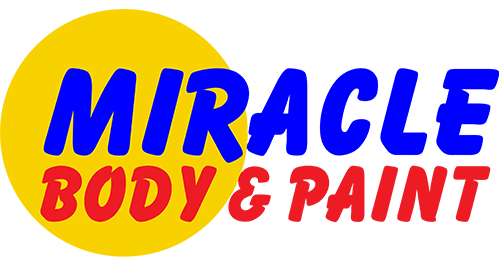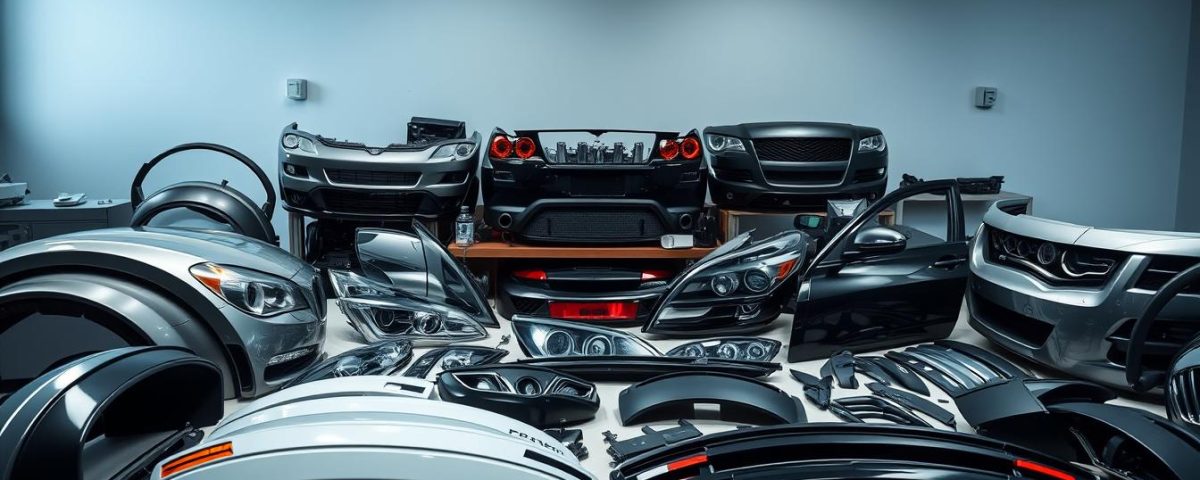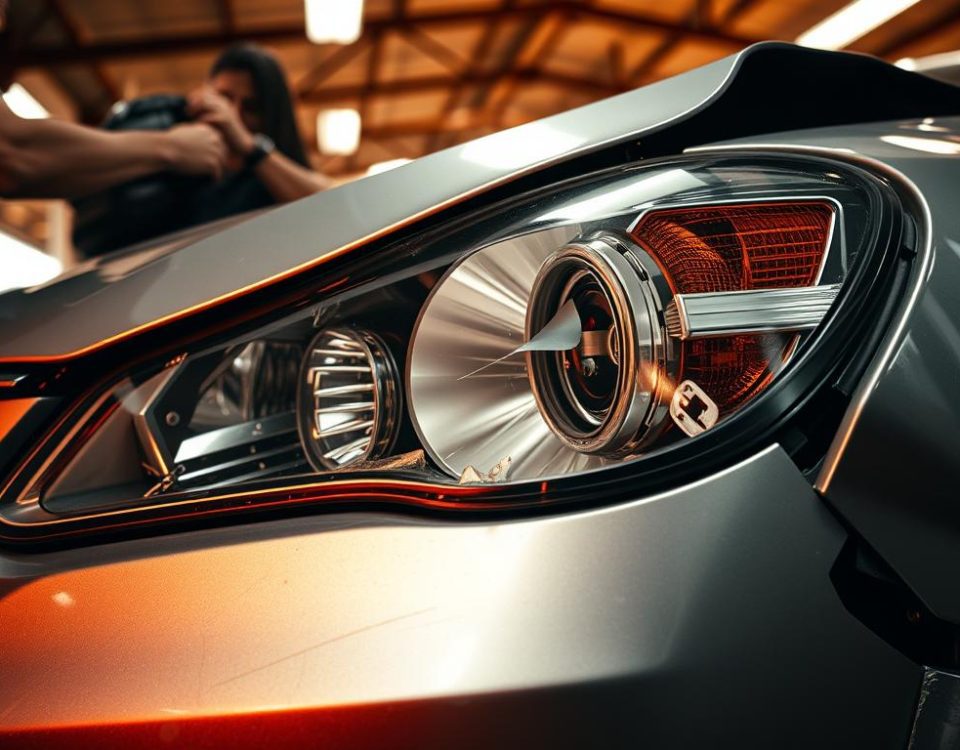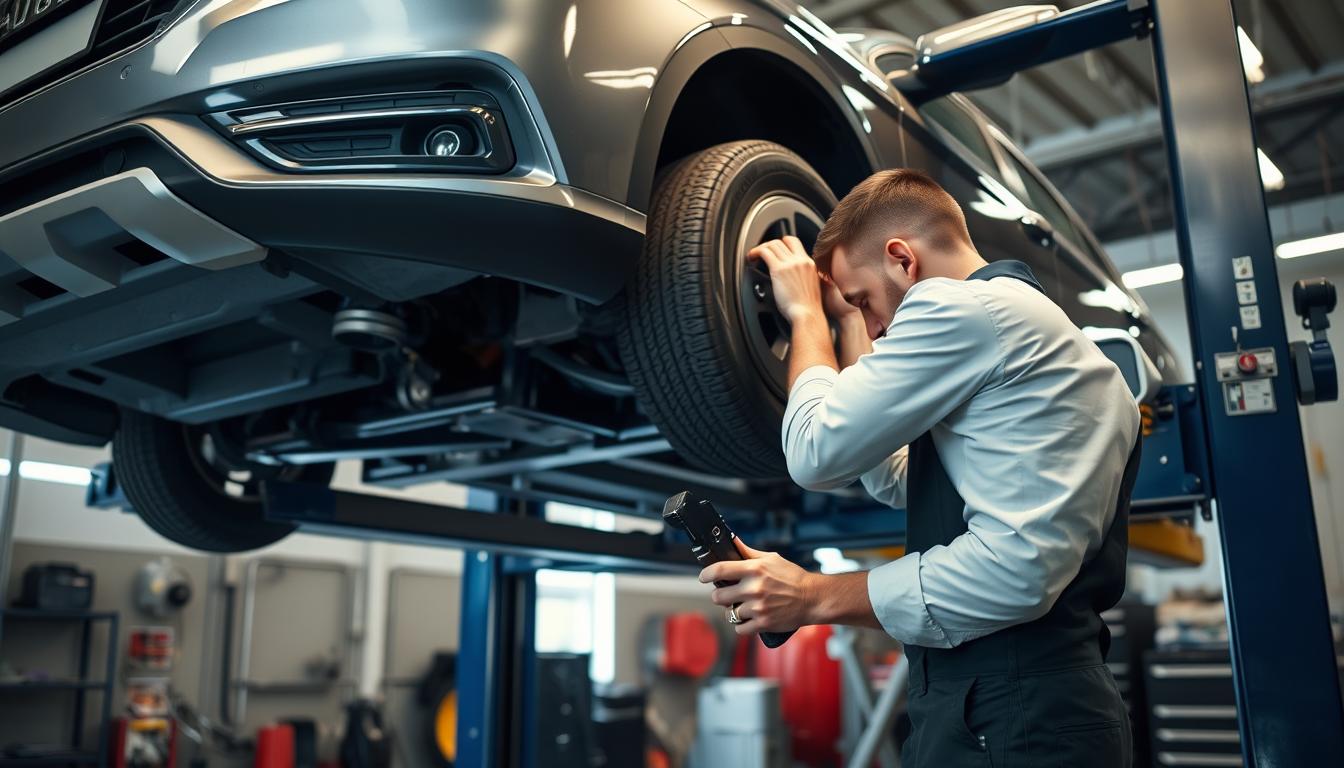
Why Alignment Checks Are Essential After a Collision

What Our Customers Say About Miracle Body and Paint
When your vehicle is involved in a collision, the repair process can be daunting. At Miracle Body and Paint Collision Center, we understand the importance of making informed decisions about the parts used in the repair. The decision between Original Equipment Manufacturer (OEM) and aftermarket parts significantly impacts the quality of the repair, the cost, and your vehicle’s performance.
OEM parts are manufactured by the same company that produced your vehicle’s original components, ensuring exact specifications and quality standards. In contrast, aftermarket parts are produced by third-party manufacturers and can vary widely in quality, price, and compatibility. Understanding the differences between these two types of parts is crucial for making the best decision for your vehicle’s repair.
Key Takeaways
- OEM parts are made by the original manufacturer, ensuring a precise fit and quality.
- Aftermarket parts vary in quality and price, offering both benefits and drawbacks.
- The choice between OEM and aftermarket parts affects repair quality, cost, and vehicle performance.
- Understanding the differences between OEM and aftermarket parts is essential for informed decision-making.
- Considerations include cost, quality, warranty implications, and long-term vehicle value.
Understanding OEM and Aftermarket Parts
When it comes to collision repair, understanding the difference between OEM and aftermarket parts is crucial. The choice between these two types of parts can significantly impact the quality, safety, and cost of vehicle repairs.
What Are OEM Parts?
OEM stands for Original Equipment Manufacturer. OEM parts are made by the same manufacturer that produced the original parts for your vehicle. These parts are designed to meet the exact specifications of your vehicle’s make and model, ensuring a perfect fit and maintaining the vehicle’s original performance. OEM parts are often considered the gold standard in collision repair because of their guaranteed quality and compatibility.
What Are Aftermarket Parts?
Aftermarket parts, on the other hand, are manufactured by companies other than the original vehicle manufacturer. These parts can offer alternatives to OEM components for collision repair and vehicle customization. The aftermarket industry provides a wide range of parts that vary in quality and price, from budget-friendly options to high-performance upgrades. Some key benefits of aftermarket parts include:
- Cost savings compared to OEM parts
- Wider availability, including options for older vehicle models
- Variety and customization options to enhance vehicle performance or appearance
However, it’s essential to research the reputation of aftermarket manufacturers and understand any potential implications for vehicle warranty and performance. Some aftermarket parts are certified by independent organizations to meet or exceed OEM specifications, providing an additional layer of quality assurance.
The Key Differences Between OEM and Aftermarket Parts
The choice between OEM and aftermarket parts can significantly impact the quality and cost of collision repairs. Understanding these differences is essential for making informed decisions.
Manufacturing Process and Quality Standards
OEM parts are manufactured by the same companies that produced the original parts for the vehicle. This ensures that they meet the manufacturer’s quality standards and are designed to fit perfectly. In contrast, aftermarket parts are made by third-party manufacturers and may vary in quality. While some aftermarket parts can be of comparable quality, others may not meet the same standards as OEM parts.
When sourcing OEM parts, repair shops typically have a direct relationship with manufacturers, allowing them to access detailed diagrams and ensure the correct parts are used. This is particularly important for newer vehicles, where OEM parts are more readily available. However, for older models, the availability of OEM parts can be limited.
Pricing and Availability Comparison
The cost difference between OEM and aftermarket parts can be significant, with OEM parts typically ranging from 20% to 60% higher in price. Aftermarket parts, on the other hand, offer a wide range of pricing options, from economy to premium, catering to different budgets.
- OEM parts command a premium price due to their guaranteed quality and perfect fit.
- Aftermarket parts offer varied pricing, making them a more affordable option for some vehicle owners.
- The availability of OEM parts can be limited for older or less common vehicle models.
- Aftermarket manufacturers often continue to produce parts for vehicles long after the original manufacturer has stopped.
Auto body shops often maintain relationships with both OEM suppliers and aftermarket distributors to ensure timely collision repairs. While OEM parts may have longer lead times, especially during supply chain disruptions, the competitive aftermarket industry offers multiple sourcing options for faster repairs.
Pros of OEM Parts in Collision Repair
In the world of collision repair, OEM parts stand out for their quality and reliability. At Conestoga Collision, we only use OEM parts to ensure that our repairs are factory-correct. This approach guarantees that the vehicle is restored to its original condition, maintaining its safety, performance, and overall value.
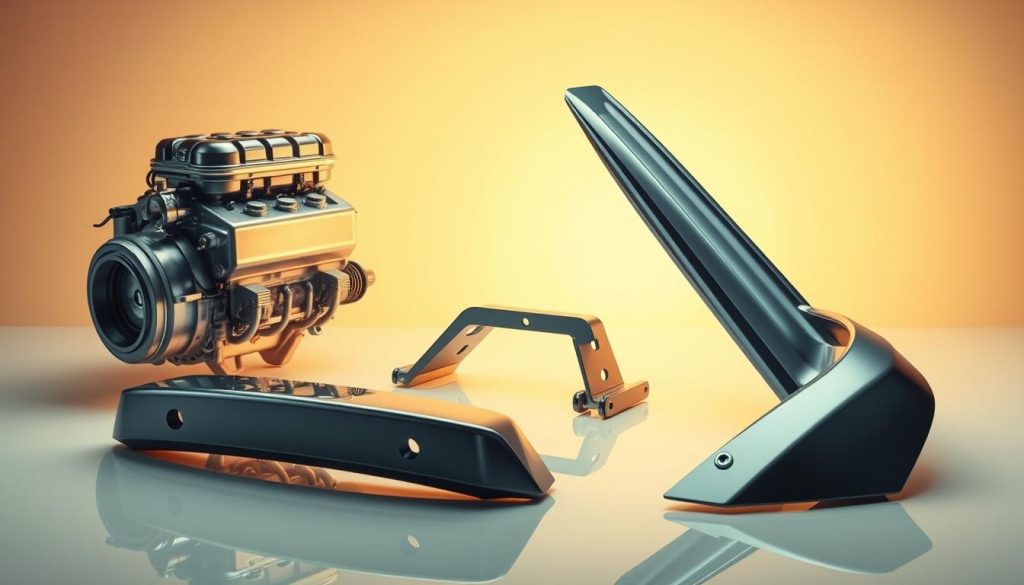
Perfect Fit and Compatibility
OEM parts are designed and manufactured to match the original specifications of the vehicle, ensuring a perfect fit and compatibility. This precision reduces the risk of additional repairs or adjustments down the line, streamlining the collision repair process.
Guaranteed Quality and Performance
The use of OEM parts guarantees quality and performance that meets the vehicle manufacturer’s standards. This is crucial for maintaining the vehicle’s safety features, handling, and overall performance, providing peace of mind for the vehicle’s owner.
Warranty Protection
OEM parts typically come with manufacturer warranties that integrate seamlessly with the vehicle’s existing warranty coverage. The benefits of OEM parts in terms of warranty protection include:
- OEM parts preserve the vehicle’s warranty status, as they are approved by the manufacturer.
- The warranty terms for OEM parts are comprehensive and longer-lasting, reflecting the manufacturer’s confidence in their components.
- Many auto body shops extend their own repair warranties when using OEM parts, knowing they meet the manufacturer’s specifications.
- Warranty claims for OEM parts involve a straightforward process through the dealer network, minimizing potential disputes.
By choosing OEM parts for collision repair, vehicle owners can enjoy comprehensive warranty protection, assured quality, and a perfect fit, ensuring their vehicle is restored to its pre-accident condition.
Cons of OEM Parts in Collision Repair
OEM parts, although preferred for their authenticity, have several cons that can complicate collision repairs. While they offer guaranteed quality and a perfect fit, their higher cost and limited availability for certain vehicle models can be significant drawbacks.
Higher Cost
One of the primary disadvantages of OEM parts is their higher cost compared to aftermarket alternatives. This increased expense is due to the fact that OEM parts are manufactured according to the original specifications of the vehicle manufacturer, ensuring a precise fit and maintaining the vehicle’s original performance. However, this precision comes at a price, making OEM parts more expensive than their aftermarket counterparts.
Limited Availability for Older Models
The availability of OEM parts can be a challenge, particularly for older vehicle models. As vehicle manufacturers typically phase out production of OEM parts after a certain period, owners of older vehicles may face difficulties in sourcing the required parts. This limited availability can lead to extended wait times for special orders or dealer searches, prolonging the repair process. For vintage or classic vehicles, the scarcity of OEM parts often necessitates turning to aftermarket reproduction parts or used components.
- Vehicle manufacturers typically phase out production of OEM parts for older models after a certain period.
- Limited production runs for less common vehicle models can result in OEM parts becoming scarce.
- When OEM parts are discontinued, vehicle owners may face extended wait times.
Pros of Aftermarket Parts in Collision Repair
When it comes to collision repair, aftermarket parts have gained popularity due to their potential benefits. The aftermarket industry is known for creating solutions and parts that meet, and sometimes exceed, the quality or functionality the vehicle requires.
One of the primary advantages of aftermarket parts is their potential to offer cost savings. These parts are often priced lower than their OEM counterparts, making them an attractive option for vehicle owners looking to reduce their repair costs.
Cost Savings
Aftermarket parts can provide significant cost savings compared to OEM parts. This is because aftermarket manufacturers often have lower production costs and can pass these savings on to consumers. As a result, vehicle owners can have their cars repaired without breaking the bank.
Wider Availability
Aftermarket parts are widely available, making them a convenient option for collision repair. With a vast network of suppliers and distributors, aftermarket parts can be sourced quickly, reducing the time it takes to repair a vehicle. This is particularly beneficial for owners of older vehicles, where OEM parts may be harder to find.
Variety and Customization Options
Aftermarket parts offer extensive customization options that go beyond OEM specifications, allowing vehicle owners to personalize their vehicle’s appearance or enhance its performance characteristics. For instance, performance-oriented aftermarket components can provide upgrades over stock parts, offering improved durability, reduced weight, or enhanced functionality for specialized applications.
Overall, aftermarket parts present a viable alternative to OEM parts in collision repair, offering cost savings, wider availability, and customization options. As the aftermarket industry continues to evolve, we can expect to see even more innovative solutions and parts that cater to diverse vehicle applications.
Cons of Aftermarket Parts in Collision Repair
While OEM parts are often considered the gold standard, aftermarket parts have their own set of drawbacks that must be considered in collision repair. As we explore the disadvantages of using aftermarket parts, it’s essential to understand the potential risks and consequences.
Quality Variability
One of the significant concerns with aftermarket parts is the variability in quality. Unlike OEM parts, which are manufactured to strict standards, aftermarket parts can differ significantly in terms of material, design, and performance. This inconsistency can lead to a range of issues, from poor fitment to compromised safety features.
Potential Fit and Compatibility Issues
Aftermarket parts can sometimes be challenging to fit, particularly if they are not designed specifically for the vehicle’s make and model. This can result in compatibility issues, potentially causing further damage to the vehicle or compromising its safety features. Ensuring a proper fit is crucial to maintaining the vehicle’s performance and safety standards.
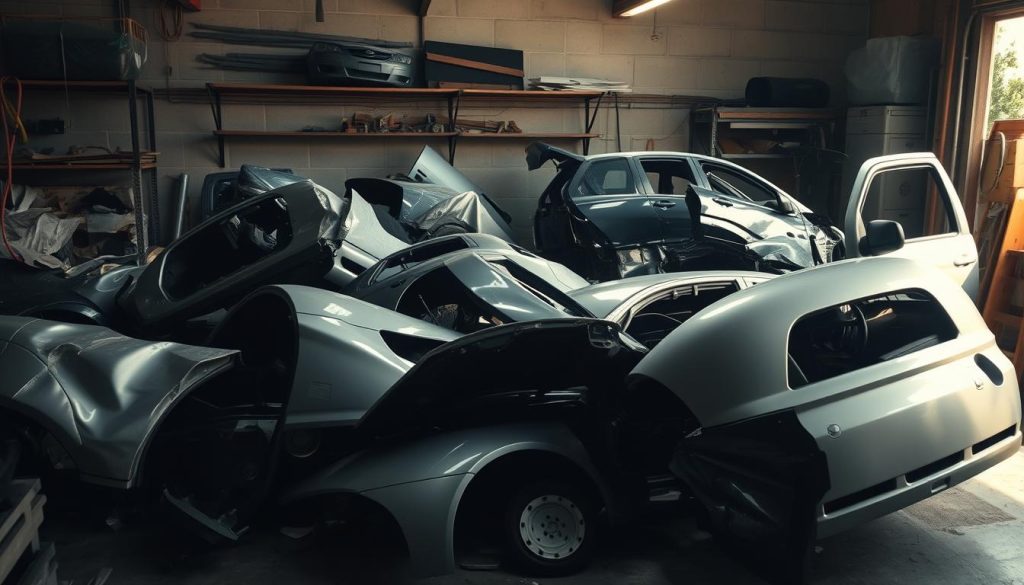
Warranty Concerns
The use of aftermarket parts can have significant implications for the vehicle’s warranty coverage. Some key concerns include:
- Using aftermarket parts can potentially void the manufacturer’s warranty, particularly if the aftermarket component causes damage to the original equipment.
- Aftermarket parts typically come with their own warranties, which are often limited in duration and scope compared to OEM warranties.
- The warranty claims process for aftermarket parts can be more complicated, requiring vehicle owners to deal directly with the part manufacturer.
Understanding the warranty implications of aftermarket parts is crucial to making informed decisions about collision repair. It’s essential to review both the vehicle manufacturer’s warranty terms and the aftermarket part manufacturer’s coverage to ensure you’re aware of the potential risks and consequences.
Choosing Auto Body Parts: Factors to Consider
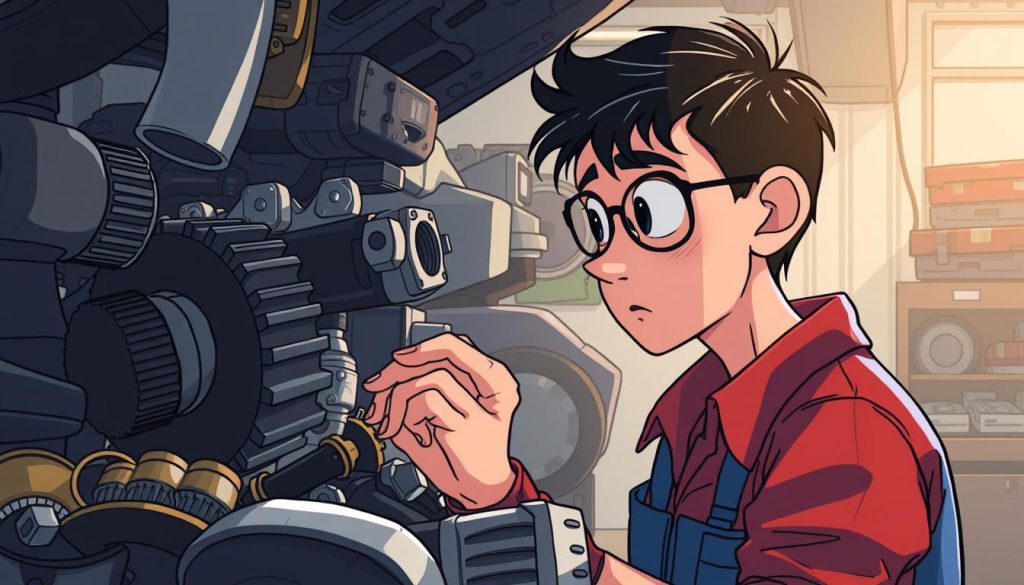
The decision to use OEM or aftermarket parts depends on several key factors. When considering auto body repair, vehicle owners must weigh the pros and cons of each option.
Vehicle Age and Value
The age and value of your vehicle play a significant role in determining the type of parts to use. For newer vehicles or those with high value, OEM parts are often preferred due to their guaranteed quality and perfect fit. This ensures that the vehicle’s performance and safety are maintained.
Insurance Coverage and Requirements
Insurance coverage and requirements can significantly impact the choice between OEM and aftermarket parts. It’s essential to check with your insurance provider to understand their policies and any specific requirements they may have. Some insurance companies may have a preference for OEM parts due to their reliability and durability.
Long-term Ownership Plans
Your long-term ownership plans should also influence your decision. If you plan to keep your vehicle for an extended period, OEM parts might be a better choice due to their long-term performance and durability. On the other hand, if you plan to sell your vehicle soon, aftermarket parts could be a cost-effective solution.
Ultimately, the choice between OEM and aftermarket parts depends on various factors, including your vehicle’s age and value, insurance coverage, and long-term ownership plans. By considering these factors, you can make an informed decision that meets your needs and budget.
How Collision Repair Shops Approach Parts Selection
The parts selection process in collision repair involves a nuanced understanding of customer needs, insurance requirements, and quality standards. As collision repair professionals, we navigate the complex relationship between these factors to ensure safe and effective repairs.
Quality and Safety Considerations
When selecting parts, our primary concern is the quality and safety of the repair. We consider the type of part, its compatibility with the vehicle, and its durability. OEM parts are often preferred for their guaranteed quality and performance, ensuring that the repair meets the manufacturer’s standards. However, we also evaluate aftermarket parts based on their quality and certification.
Our expertise helps us determine the most suitable parts for each repair, balancing quality with cost considerations. We understand that using the right parts is crucial for the safety and integrity of the vehicle, and we take this responsibility seriously.
Working with Insurance Companies
Collision repair shops regularly interact with insurance companies to facilitate the repair process. We develop expertise in insurance policy language and claims processes, helping customers understand their coverage and options for parts selection. When insurance companies specify aftermarket parts, we serve as advocates for our customers, ensuring that the chosen parts meet the necessary quality and safety standards.
We maintain relationships with multiple insurance companies while balancing our obligations to provide safe, quality repairs that meet both customer and insurer expectations. Efficient communication and negotiation with insurance companies are critical to minimizing delays and ensuring a smooth repair process.
The Impact of Parts Choice on Vehicle Value and Performance
The decision to use OEM or aftermarket parts for collision repair can significantly influence a vehicle’s resale value and overall performance. When considering the type of parts to use, it’s essential to weigh the potential consequences on the vehicle’s safety and overall condition.
Resale Value Considerations
Using OEM parts for collision repair can help maintain a vehicle’s resale value. Aftermarket parts, on the other hand, may compromise the vehicle’s value due to concerns about their quality and installation. Potential buyers may be deterred by the use of non-OEM parts, impacting the vehicle’s marketability.
Safety and Performance Implications
The choice of repair parts directly impacts vehicle safety and performance, particularly in subsequent collisions. Modern vehicles rely on precisely calibrated crumple zones and energy management systems that may function differently when aftermarket parts alter the original design parameters. Some key areas where parts selection has significant safety implications include:
- Safety-critical components like airbag sensors and structural reinforcements
- Energy-absorbing elements that play a crucial role in crashworthiness
- The integration of advanced driver assistance systems (ADAS) with vehicle structures
Professional collision repair facilities consider both immediate and long-term safety implications when making parts recommendations, balancing cost considerations with their ethical obligation to restore vehicle safety.
Trust Miracle Body and Paint for Expert Collision Repair
At Miracle Body and Paint Collision Center, our decades of expertise ensure that your vehicle is restored to its pre-accident condition with precision and care. We understand that collision repair is not just about fixing damage; it’s about restoring your vehicle’s safety, performance, and long-term value.
Our Commitment to Excellence
- Our technicians are highly trained in the latest collision repair techniques and stay updated with evolving vehicle technologies.
- We prioritize quality in our parts selection process, ensuring your vehicle’s safety and performance are preserved.
- With two convenient locations in San Antonio, we provide accessible expert collision repair services to residents throughout the area.
We pride ourselves on transparent communication throughout the repair process, explaining your options for OEM and aftermarket parts and helping you make informed decisions about your vehicle’s repair. At Miracle Body and Paint Collision Center, we treat your vehicle with the same care we would our own, ensuring repairs you can trust.
Visit us at our North West San Antonio location in Leon Valley at 6217 Grissom Rd. (210-680-1987) or our North East San Antonio facility at 4650 Walzem Rd. (210-858-3630) to experience the difference that true collision repair expertise makes. Choose Miracle Body and Paint Collision Center for expert service and quality repairs.

